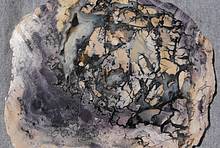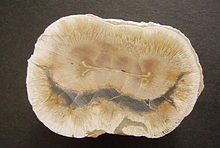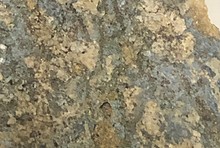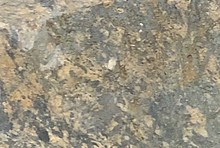Home PageAbout MindatThe Mindat ManualHistory of MindatCopyright StatusWho We AreContact UsAdvertise on Mindat
Donate to MindatCorporate SponsorshipSponsor a PageSponsored PagesMindat AdvertisersAdvertise on Mindat
Learning CenterWhat is a mineral?The most common minerals on earthInformation for EducatorsMindat ArticlesThe ElementsThe Rock H. Currier Digital LibraryGeologic Time
Minerals by PropertiesMinerals by ChemistryAdvanced Locality SearchRandom MineralRandom LocalitySearch by minIDLocalities Near MeSearch ArticlesSearch GlossaryMore Search Options
The Mindat ManualAdd a New PhotoRate PhotosLocality Edit ReportCoordinate Completion ReportAdd Glossary Item
Mining CompaniesStatisticsUsersMineral MuseumsClubs & OrganizationsMineral Shows & EventsThe Mindat DirectoryDevice SettingsThe Mineral Quiz
Photo SearchPhoto GalleriesSearch by ColorNew Photos TodayNew Photos YesterdayMembers' Photo GalleriesPast Photo of the Day GalleryPhotography
╳Discussions
💬 Home🔎 Search📅 LatestGroups
EducationOpen discussion area.Fakes & FraudsOpen discussion area.Field CollectingOpen discussion area.FossilsOpen discussion area.Gems and GemologyOpen discussion area.GeneralOpen discussion area.How to ContributeOpen discussion area.Identity HelpOpen discussion area.Improving Mindat.orgOpen discussion area.LocalitiesOpen discussion area.Lost and Stolen SpecimensOpen discussion area.MarketplaceOpen discussion area.MeteoritesOpen discussion area.Mindat ProductsOpen discussion area.Mineral ExchangesOpen discussion area.Mineral PhotographyOpen discussion area.Mineral ShowsOpen discussion area.Mineralogical ClassificationOpen discussion area.Mineralogy CourseOpen discussion area.MineralsOpen discussion area.Minerals and MuseumsOpen discussion area.PhotosOpen discussion area.Techniques for CollectorsOpen discussion area.The Rock H. Currier Digital LibraryOpen discussion area.UV MineralsOpen discussion area.Recent Images in Discussions
Field CollectingAccessibility to sites for those of limited mobility.

6th Aug 2015 12:28 UTCJay I. G. Roland
Perhaps there could be a sliding scale of accessibility from 10 being the easiest to get to, park at and collect from to 1 being a site that requires serious mountaineering skills or miles of moorland walking before one can get started?
Being such a person myself I would find it mighty helpful when deciding whether to drive out several miles to an old mine dump, quarry etc. I have often arrived at places only to be halted by serious overgrowth, many fences to be climbed or precarious cliff paths to be negotiated.
Any thoughts anyone?
Regards,
Jay.
6th Aug 2015 15:42 UTCRui Nunes 🌟 Expert
6th Aug 2015 15:55 UTCDale Foster Manager

6th Aug 2015 16:07 UTCBob Harman
Nevertheless, I do like it so maybe this should be experimented with for several sites and see how it works after a year or so. CHEERS…..BOB

6th Aug 2015 17:00 UTCBecky Coulson 🌟 Expert
6th Aug 2015 17:32 UTCDavid Von Bargen Manager
7th Aug 2015 00:47 UTCJolyon Ralph Founder
There are so many variables there that it's not just a black and white issue of "allowed" or "not allowed". We simply don't know the access situation for the majority of sites. And even when we do, we could put that a site is open online today, and tomorrow the owners could change their mind and close it.
There are very few sites that are fully open and guaranteed to remain open for mineral collecting (and even those which we expect to remain open could close if laws change).
This is why we decided that it was in our best interests to try not to say anything about a sites status for collecting (other than if a landowner really wants us to make it clear that a site is closed).
Jolyon

7th Aug 2015 02:28 UTCWayne Corwin
Does Mindat have a standard posting (signage) that can be added to a locality if the property owner wants it known that a site is closed?
7th Aug 2015 12:55 UTCJolyon Ralph Founder
"NOTE: The property owners have asked us to make clear that this locality is on private property and is currently (INSERT MONTH/YEAR HERE) off-limits to collectors. Unauthorized access to this property for mineral collecting or any other reason strictly prohibited."
We do ask to see some evidence that the person asking IS the property owner. And adding the date into the above is very important too.

7th Aug 2015 13:17 UTCAlfredo Petrov Manager
Having third parties post such info on Mindat could result in some less-than-honest field collectors just trying to frighten other collectors away from their favorite digging spots :-D
More specifically re the original question about accessibility for the handicapped, if a locality has its coordinates listed on Mindat, one can often see on the Google Earth image whether it is possible to drive right up to a quarry or mine dump or not.
7th Aug 2015 14:39 UTCDale Foster Manager
Taking one of my favourite sites at St Agnes, everything looks great on the Google Earth images - but actually go to 'boots on the ground' and it is a totally different kettle of fish - what looked easily accessible is actually full of steep slopes and heavy undergrowth that requires determined scrambling to get to the interesting spots.

7th Aug 2015 14:49 UTCJay I. G. Roland
I don't think it would be asking too much to simply give a bit of detail as to how easy/difficult a location would be to access including parking facilities if available, with of course a caveat stating that permission must always be sought & granted afore one starts to collect.
I suspect there are more than a few folk that would find such details very useful when making plans for visits. As for using Google Earth I appreciate it does have its uses but they are very limited in this regard. I have just tried it for the location I was attempting to access and the images are wholly inadequate for any detailed assessment as to whether the site is accessible to those with limited mobility.
Anyway, it was just a thought.
Regards,
Jay.
7th Aug 2015 19:02 UTCRob Woodside 🌟 Manager
7th Aug 2015 20:35 UTCJolyon Ralph Founder
Jolyon
7th Aug 2015 21:43 UTCRui Nunes 🌟 Expert
So, it is necessary some care when adding information inviting people to go to the house of others. I know of more examples of similar situations.
I keep in my agenda lots of usefull contacts for a large number of portuguese localities and have never received a negative answer when asking permission for a visit.
Rui

7th Aug 2015 22:06 UTCColin Robinson
There are many sites I'd like to visit but old age and infirmity mean I never will. I accept that but still get a great deal of enjoyment from the places I can manage to get to. If my way is obstructed by a barbed-wire fence I turn round and go back. The last time I attempted to climb over one I slipped and seriously gashed my left hand. I know my limitations and live with them. PLEASE, let's not start poking a stick into the hornets nest by discussing site accessibility.
7th Aug 2015 22:28 UTCKyle Beucke 🌟
Kyle
8th Aug 2015 00:12 UTCScott Rider
I found a small pocket of deep green Amazonite that was literally on the edge of a parking/camping spot. I noticed about a half dozen iron-crusted microcline crystals that ended up being very, very well formed amazonite!! There were small smoky and fluorite crystals found there as well. All of that was found about 10 feet from Rampart Range road, and like I said, in the parking lot of one of the camping sites. That isn't the only parking lot pocket either, they are all over Rampart Range...

8th Aug 2015 09:21 UTCsteven garza
As some know, I give collecting/natural history trips, to various localities; however, BEFORE I do, I have to have a standard set of questions answered. The info isn't to keep them off a trip, but, for me, so I can look out for possible attacks ("gold fever" tends to hide such, from the person having them, until it gets BAD), to help them avoid trail hazards that expose them to allergens, chose another LONGER route they can handle, or, even eliminate a locality for a better accessible one. I can do this all the way up to "wheelchair" level. As mentioned, this would take some who has been RECENTLY, & continuously, to an "x" site, for such to be any good. On top of that, you MUST ask the property owner, who may let average people collect freely, if a handicapped person would be allowed; because of the HIGHLY increased risk of liability, he may say no. Even if the property own likes you, anyone who didn't trust you implicitly, is likely to say "no".
A handicollector would have to ask local collectors for this info, as, even if it was posted here it's OK, that info can mis-info, the minute it was posted. Also, a handicollector should be willing to have people help them, in whatever manner would be necessary (portage through rougher terrain, unseating & seating, tool use), &, unfortunately, they tend to want "total independence", to the degree that they won't allow such. Another "also": who's scale would be used to "grade" these localities? How would this "X level" be assigned?
Your friend, Steve
8th Aug 2015 23:37 UTCRalph S Bottrill 🌟 Manager




Mindat.org is an outreach project of the Hudson Institute of Mineralogy, a 501(c)(3) not-for-profit organization.
Copyright © mindat.org and the Hudson Institute of Mineralogy 1993-2024, except where stated. Most political location boundaries are © OpenStreetMap contributors. Mindat.org relies on the contributions of thousands of members and supporters. Founded in 2000 by Jolyon Ralph.
Privacy Policy - Terms & Conditions - Contact Us / DMCA issues - Report a bug/vulnerability Current server date and time: April 23, 2024 18:54:20
Copyright © mindat.org and the Hudson Institute of Mineralogy 1993-2024, except where stated. Most political location boundaries are © OpenStreetMap contributors. Mindat.org relies on the contributions of thousands of members and supporters. Founded in 2000 by Jolyon Ralph.
Privacy Policy - Terms & Conditions - Contact Us / DMCA issues - Report a bug/vulnerability Current server date and time: April 23, 2024 18:54:20












